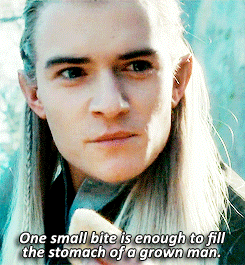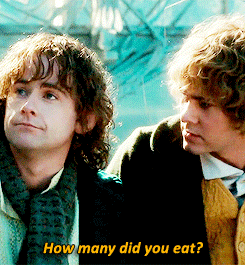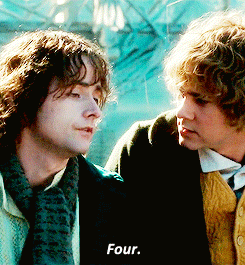Failing To Find A Single Functioning Stapler, The Grad Student Struggles To Keep Things Together.

Failing to find a single functioning stapler, the grad student struggles to keep things together.
More Posts from Smparticle2 and Others





From the TV series “The life of Mammals”.
(The Telegraph)




Snowflakes from William Scoresby’s des Jüngern Tagebuch einer reise auf den Wallfischfang, (Hamburg: F. Perthes, 1825), the German translation of Journal of a voyage to the northern whale-fishery.
Scoresby was an Arctic explorer with interests in meteorology and navigation, who led an Arctic exploration in the early 1800s to the area around Greenland.

Engineers build world’s lightest mechanical watch thanks to graphene
An ultralight high-performance mechanical watch made with graphene is unveiled today in Geneva at the Salon International De La Haute Horlogerie thanks to a unique collaboration.
The University of Manchester has collaborated with watchmaking brand Richard Mille and McLaren F1 to create world’s lightest mechanical chronograph by pairing leading graphene research with precision engineering.
The RM 50-03 watch was made using a unique composite incorporating graphene to manufacture a strong but lightweight new case to house the delicate watch mechanism. The graphene composite known as Graph TPT weighs less than previous similar materials used in watchmaking.
Graphene is the world’s first two-dimensional material at just one-atom thick. It was first isolated at The University of Manchester in 2004 and has the potential to revolutionise a large number of applications including, high-performance composites for the automotive and aerospace industries, as well as flexible, bendable mobile phones and tablets and next-generation energy storage.
Read more.
The Myth of Prometheus

Before the creation of humanity, the Greek gods won a great battle against a race of giants called the Titans. Most Titans were destroyed or driven to the eternal hell of Tartarus. But the Titan Prometheus, whose name means foresight, persuaded his brother Epimetheus to fight with him on the side of the gods.

As thanks, Zeus entrusted the brothers with the task of creating all living things. Epimetheus was to distribute the gifts of the gods among the creatures. To some, he gave flight; to others, the ability to move through water or race through grass. He gave the beasts glittering scales, soft fur, and sharp claws.

Meanwhile, Prometheus shaped the first humans out of mud. He formed them in the image of the gods, but Zeus decreed they were too remain mortal and worship the inhabitants of Mount Olympus from below. Zeus deemed humans subservient creatures vulnerable to the elements and dependent on the gods for protection. However, Prometheus envisioned his crude creations with a greater purpose. So when Zeus asked him to decide how sacrifices would be made, the wily Prometheus planned a trick that would give humans some advantage. He killed a bull and divided it into two parts to present to Zeus. On one side, he concealed the succulent flesh and skin under the unappealing belly of the animal. On the other, he hid the bones under a thick layer of fat. When Zeus chose the seemingly best portion for himself, he was outraged at Prometheus’s deception.

Fuming, Zeus forbade the use of fire on Earth, whether to cook meat or for any other purpose. But Prometheus refused to see his creations denied this resource. And so, he scaled Mount Olympus to steal fire from the workshop of Hephaestus and Athena. He hid the flames in a hollow fennel stalk and brought it safely down to the people. This gave them the power to harness nature for their own benefit and ultimately dominate the natural order.

With fire, humans could care for themselves with food and warmth. But they could also forge weapons and wage war. Prometheus’s flames acted as a catalyst for the rapid progression of civilization. When Zeus looked down at this scene, he realized what had happened. Prometheus had once again wounded his pride and subverted his authority.

Furious, Zeus imposed a brutal punishment. Prometheus was to be chained to a cliff for eternity. Each day, he would be visited by a vulture who would tear out his liver and each night his liver would grow back to be attacked again in the morning. Although Prometheus remained in perpetual agony, he never expressed regret at his act of rebellion. His resilience in the face of oppression made him a beloved figure in mythology. He was also celebrated for his mischievous and inquisitive spirit, and for the knowledge, progress, and power he brought to human hands.

He’s also a recurring figure in art and literature. In Percy Bysshe Shelley’s lyrical drama “Prometheus Unbound,” the author imagines Prometheus as a romantic hero who escapes and continues to spread empathy and knowledge. Of his protagonist, Shelley wrote, “Prometheus is the type of the highest perfection of moral and intellectual nature, impelled by the purest and the truest motives to the best and noblest ends.” His wife Mary envisaged Prometheus as a more cautionary figure and subtitled her novel “Frankenstein: The Modern Prometheus.” This suggests the damage of corrupting the natural order and remains relevant to the ethical questions surrounding science and technology today. As hero, rebel, or trickster, Prometheus remains a symbol of our capacity to capture the powers of nature, and ultimately, he reminds us of the potential of individual acts to ignite the world.
From the TED-Ed Lesson The myth of Prometheus - Iseult Gillespie
Animation by Léa Krawczyk ( @lea–krawczyk )





Flowers








My Neighbor Totoro | Tonari no Totoro (1988, Japan)
Director: Hayao Miyazaki Cinematographer: Mark Henley







-
 danshikoko liked this · 4 years ago
danshikoko liked this · 4 years ago -
 mccoythirsthoneybee reblogged this · 4 years ago
mccoythirsthoneybee reblogged this · 4 years ago -
 thehumanpazcki liked this · 4 years ago
thehumanpazcki liked this · 4 years ago -
 gwogobo liked this · 4 years ago
gwogobo liked this · 4 years ago -
 aces4aces liked this · 4 years ago
aces4aces liked this · 4 years ago -
 jackspicerismyqueen liked this · 4 years ago
jackspicerismyqueen liked this · 4 years ago -
 lolahat liked this · 5 years ago
lolahat liked this · 5 years ago -
 mjhammy01 liked this · 5 years ago
mjhammy01 liked this · 5 years ago -
 stickers-on-a-laptop liked this · 5 years ago
stickers-on-a-laptop liked this · 5 years ago -
 bookish-quotes-and-stuff liked this · 5 years ago
bookish-quotes-and-stuff liked this · 5 years ago -
 titi-5 liked this · 5 years ago
titi-5 liked this · 5 years ago -
 the-biggest-apple liked this · 5 years ago
the-biggest-apple liked this · 5 years ago -
 mamadenerds liked this · 6 years ago
mamadenerds liked this · 6 years ago -
 studiousgengar liked this · 6 years ago
studiousgengar liked this · 6 years ago -
 freshhorchata liked this · 6 years ago
freshhorchata liked this · 6 years ago -
 likeicetea liked this · 6 years ago
likeicetea liked this · 6 years ago -
 red--opti liked this · 6 years ago
red--opti liked this · 6 years ago -
 empty-bravado liked this · 6 years ago
empty-bravado liked this · 6 years ago -
 geelee12 liked this · 6 years ago
geelee12 liked this · 6 years ago -
 poppunkandtoodrunk liked this · 6 years ago
poppunkandtoodrunk liked this · 6 years ago -
 cosmosogurl liked this · 6 years ago
cosmosogurl liked this · 6 years ago -
 pbrisbestbeer liked this · 6 years ago
pbrisbestbeer liked this · 6 years ago -
 pbrisbestbeer reblogged this · 6 years ago
pbrisbestbeer reblogged this · 6 years ago -
 strangeanimebitch liked this · 7 years ago
strangeanimebitch liked this · 7 years ago -
 milesgonzalomorales liked this · 7 years ago
milesgonzalomorales liked this · 7 years ago -
 cndnqueen liked this · 7 years ago
cndnqueen liked this · 7 years ago -
 thistooisanadventure reblogged this · 7 years ago
thistooisanadventure reblogged this · 7 years ago -
 wishseeds liked this · 7 years ago
wishseeds liked this · 7 years ago -
 hamath liked this · 7 years ago
hamath liked this · 7 years ago -
 litgradlife liked this · 7 years ago
litgradlife liked this · 7 years ago -
 blueackles liked this · 7 years ago
blueackles liked this · 7 years ago -
 alexninn liked this · 7 years ago
alexninn liked this · 7 years ago -
 nmtues liked this · 7 years ago
nmtues liked this · 7 years ago -
 madameliliana1001 liked this · 7 years ago
madameliliana1001 liked this · 7 years ago -
 repost-this-image liked this · 7 years ago
repost-this-image liked this · 7 years ago -
 greatprocrastinationgodsledyouto reblogged this · 7 years ago
greatprocrastinationgodsledyouto reblogged this · 7 years ago -
 greatprocrastinationgodsledyouto liked this · 7 years ago
greatprocrastinationgodsledyouto liked this · 7 years ago -
 deir liked this · 7 years ago
deir liked this · 7 years ago -
 facework reblogged this · 7 years ago
facework reblogged this · 7 years ago -
 marginalhybrid liked this · 7 years ago
marginalhybrid liked this · 7 years ago -
 usernamealreadytakenagain liked this · 7 years ago
usernamealreadytakenagain liked this · 7 years ago -
 von-lowtzow liked this · 7 years ago
von-lowtzow liked this · 7 years ago -
 salt-kissed reblogged this · 7 years ago
salt-kissed reblogged this · 7 years ago -
 salt-kissed liked this · 7 years ago
salt-kissed liked this · 7 years ago -
 the-nerd-bird liked this · 7 years ago
the-nerd-bird liked this · 7 years ago -
 annoyinginternetstranger liked this · 7 years ago
annoyinginternetstranger liked this · 7 years ago